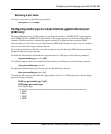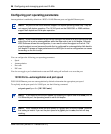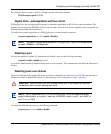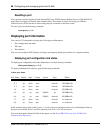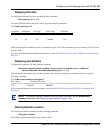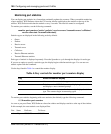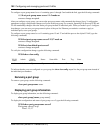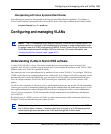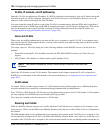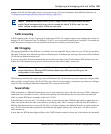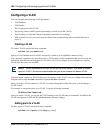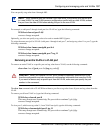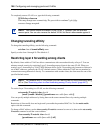
Configuring and managing ports and VLANs 103
Nortel WLAN—Security Switch 2300 Series Configuration Guide
Interoperating with Cisco Systems EtherChannel
Load-sharing port groups are interoperable with Cisco Systems EtherChannel capabilities. To configure a
Cisco Catalyst
switch to interoperate with a Nortel WSS, use the following command on the Catalyst switch:
set port channel port-list mode on
Configuring and managing VLANs
Understanding VLANs in Nortel WSS software
A virtual LAN (VLAN) is a Layer 2 broadcast domain that can span multiple wired or wireless LAN
segments. Each VLAN is a separate logical network and, if you configure IP interfaces on the VLANs, WSS
Software treats each VLAN as a separate IP subnet.
Only network ports can be preconfigured to be members of one or more VLAN(s). You configure VLANs on
a WSS’s network ports by configuring them on the switch itself. You configure a VLAN by assigning a name
and network ports to the VLAN. Optionally, you can assign VLAN tag values on individual network ports.
You can configure multiple VLANs on a WSS’s network ports. Optionally, each VLAN can have an IP
address.
VLANs are not configured on AP access ports or wired authentication ports, because the VLAN membership
of these types of ports is determined dynamically through the authentication and authorization process. Users
who require authentication connect through WSS ports that are configured for APs or wired authentication
access. Users are assigned to VLANs automatically through authentication and authorization mechanisms
such as 802.1X.
By default, none of a WSS’s ports are in VLANs. A switch cannot forward traffic on the network until you
configure VLANs and add network ports to those VLANs.
Note. The CLI commands in this chapter configure VLANs on WSS network ports. The
commands do not configure VLAN membership for wireless or wired authentication users.
To assign a user to a VLAN, configure the RADIUS Tunnel-Private-Group-ID attribute or the
VLAN-Name vendor specific attribute (VSA) for that user. (For more information, see
“Configuring AAA for network users” (page 467).)
Note. A wireless client cannot join a VLAN if the physical network ports on the WSS in
the VLAN are down. However, a wireless client that is already in a VLAN whose physical
network ports go down remains in the VLAN even though the VLAN is down.



